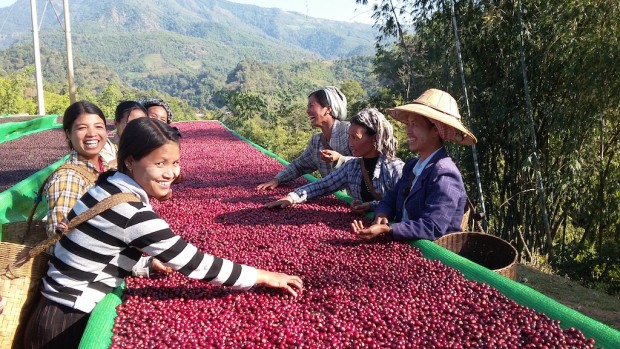
The Mya Ze Di community in the southern Shan state of Myanmar. Photo courtesy of Winrock International.
A promising sign for the developing specialty coffee sector in Myanmar, coffees at the second ever Myanmar Coffee Association cupping competition generally outscored last year’s marks, with higher-scoring individual winners and a much higher percentage of total coffees reaching specialty grade.
Placed on the Specialty Coffee Association of America scale, 56 of 60 total samples gathered for the competition met the 80-point threshold, while the winning coffee —a fully washed SL34 lot from Green Land Coffee estate of Pyin Oo Lwin — came in at 87 points. The top dry natural coffee, and second-highest-scoring coffee overall, from the Ma Mi Nyo smallholder community of Shan State, earned 86.75.
At last year’s inaugural competition — organized by numerous organizations working to improve Myanmar arabica quality, to bring it to market and to support the country’s farmers — the top scoring coffee, by comparison, earned an 84.25, while 21 of the 58 coffees scored met the 80-point mark.
This event was part of the USAID-funded Value Chains for Rural Development project implemented by the nonprofit Winrock International and organized by the Myanmar Coffee Association and the Coffee Quality Institute.
Three international judges and two local observers assessed the coffee. The international team was composed of SCAA Board Member Andrew Hetzel, Momentum Coffee founder and SCAA Roasters Guild Executive Council President Allen Leibowitz, and Sustainable Harvest Relationship Manager Dane Loraas.
The competition included estate-grown coffees as well as those from small farms, with the field representing 30 fully washed coffees and 30 naturals. According to CQI, coffees featured in the Myanmar project — including the top-scoring coffees — will be cupped at next month’s SCAA Event in Atlanta, which takes place April 14-17.
Nick Brown
Nick Brown is the editor of Daily Coffee News by Roast Magazine.






Comment